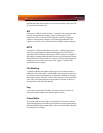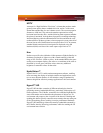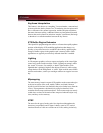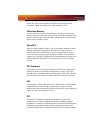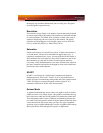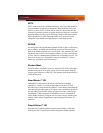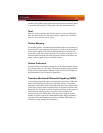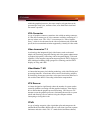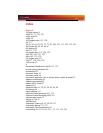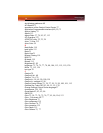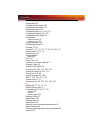
126
image quality. Anti-aliasing performance is improved, providing better
overall detail and image quality. The enhanced anisotropic filtering ensures
sharper and clearer pictures at higher frame rates, and the new 3Dc™
compression technology makes it possible to display higher polygon counts
for 3D rendered objects.
Specular Highlight
The bright, usually small, intense light reflected from a 3D surface with a
high refraction value. From the intensity and spread of this highlight users
can differentiate between a “hard,” smooth surface, such as metal or
porcelain, or a “soft,” textured surface, such as fabric or skin.
Super Anti-aliasing
A feature that improves image quality by combining the results of full-
screen anti-aliasing across two graphics cards in a CrossFire™
configuration. The two graphics cards work on different anti-aliasing
patterns within each frame. The results of which are combined by the
compositing engine on the CrossFire™ Master graphics card to produce 3D
images featuring smoother contours, lines, and shading effects.
SuperTiling
A graphical load-balancing scheme where two graphics cards are used to
render alternate small 32x32 pixel squares in a fine-grained checkerboard
pattern. This configuration increases image rendering quality, as each card
processes half of the complex 3D objects in the pixel squares. SuperTiling
is better optimized for most applications than Scissor Mode (where two
graphics cards are used to render the top and bottom halves of the screen),
since the checkerboard pattern better ensures a more even distribution of
what needs to be rendered. This type of graphical operation is only
available in Radeon® CrossFire™ graphics cards running Microsoft®
Direct 3D® games or applications.
S-Video
Short for “Separate Video,” S-Video is a type of analog video interface that
produces a higher-quality signal compared to composite video. The signal
is split into two separate channels— luminance (Y) and chrominance (C).
Sometimes referred to as “Y/C video” or “Y/C”, the connectors typically



